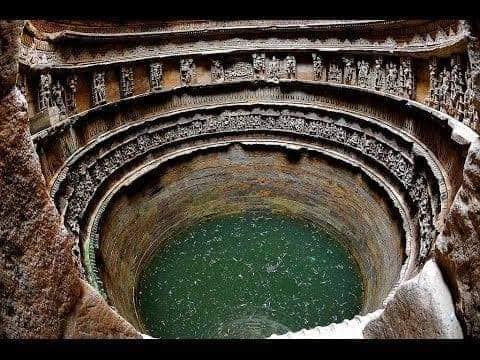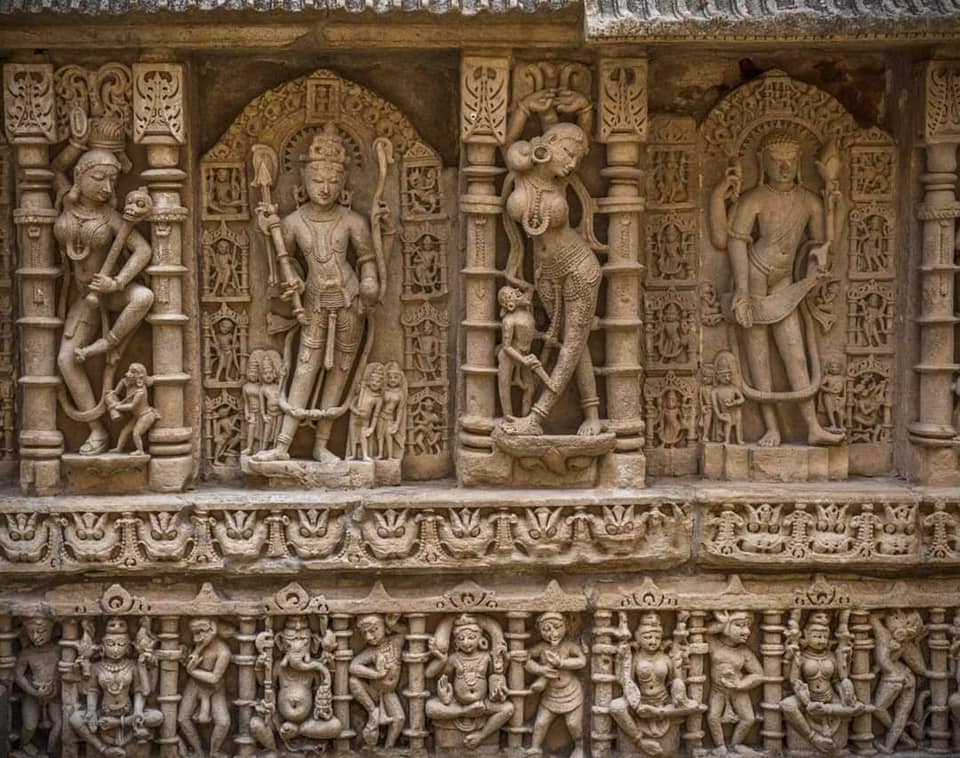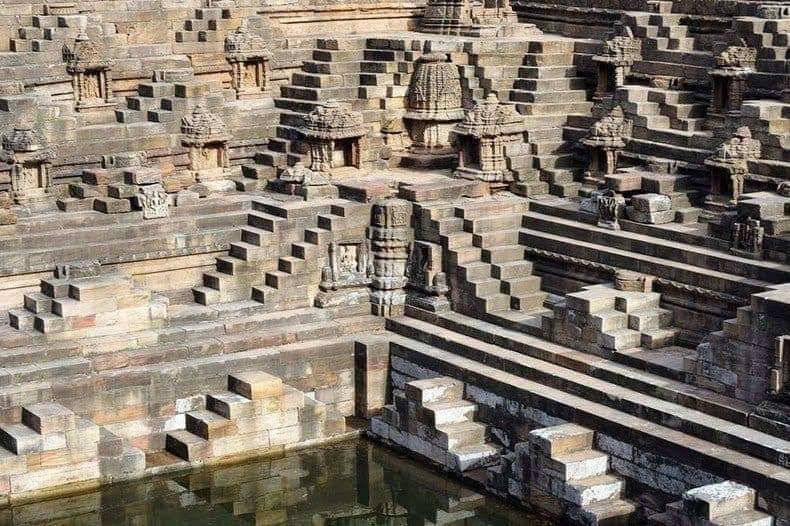‘Rani Ki Vav’, (The Queen’s Stepwell), an 11th-century architectural wonder built by Rajput Queen Udaymati in memory of her husband Bhimdev I of the Solanki Rajput dynasty is imprinted on The New ₹100 Note.
The new note is in lavender colour and bears the motif of ‘Rani ki Vav’ on its reverse side.

Located in Gujarat’s Patan, the 900-year-old structure is a major tourist attraction, a UNESCO World Heritage site. It became a UNESCO World Heritage Site in 2014 and was also awarded for being the cleanest heritage site in the country in 2016. It is maintained by the Archaeological Survey of India (ASI).
A thousand years ago, when powerful Solankis ruled Gujrat, a Rajput queen named Udyamati dug a stone-lined well to lap the underground aquifer. Rani ki Vav has been included in the list of world heritage on 23 June 2014 by UNESCO due to its amazing and huge structure.

The Solanki Rajput dynasty’s queen, Rani Udayamati built the structure as a memorial to her deceased husband Bhimdev I Solanki in the 11th century. Bhima I (r. c. 1022–1064 CE) was a Chaulukya (Solanki) king who ruled parts of present-day Gujarat, India. The earliest of the Dilwara Temples and the Modhera Sun Temple were built during Bhima’s reign. The construction of Rani ki vav is attributed to his queen Udayamati. Udayamati did something spectacular, She commissioned a magnificent monument to encase her well and protect its precious waters.
Descended into the earth itself, negotiating seven stories of terraced steps and covered pavilions.

Over the years, as the Saraswati river changed its course, the massive structure was flooded and lay buried until its excavation by the Archaeological Survey of India in the late 1980s.
Literally translated as the ‘Queen’s Stepwell’, Rani ki Vav is designed as an inverted temple that pays homage to water. Rani-ki-Vav highlights the sanctity of water as it is designed as an inverted temple under the earth’s surface. The central theme is the Dasavataras, or ten incarnations of Vishnu, including Buddha.

It is not just a subterranean water storage system but also an architectural wonder. Udayamati’s well was an architectural wonder -an underground monument that not only stored water but was decorated with so many intricate carvings and sculptures of Hindu deities that it resembled an inverted temple.
The Stepwell has seven levels of beautifully carved stairs with over 1500 mythological and religious sculptures. It is featuring over 500 sculptures and over 1,000 minor ones combining religious, mythological and secular imagery, often referencing literary works. At the fourth level is the water tank.
Reportedly, there is also a gate beneath the last step of the well, leading to a 30m tunnel and opening into Sidhpur, a town close to Patan. It was used as an escape gateway during war or invasion.
Head over to this 900-year-old heritage site to appreciate its beauty and grandeur in a true sense. It is open from 8 am to 6 pm, it is located in Patan, about 125 km from Ahmedabad.



